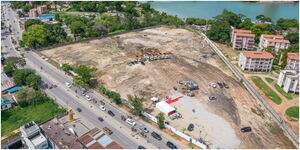Train transport has been in existence for over a century now.
Over that period, few accidents have been reported. The most high-profile tragedy that has been reported recently is the one that occurred in India earlier in June 2023 which culminated in 260 fatalities.
Interestingly, one of the main reasons why accidents are rare in rail transport is because of the unique shape of train tyres.
In Kenya, train transport is not relied on a daily basis by most people meaning that is likely most are not familiar with the mechanics of rail transport including the shape of a train's tyres.
Shape
Train tyres are designed with a slight conical shape, setting them apart from other types of tyres.
This design serves a dual purpose.
Firstly, the conical shape enhances traction and prevents sliding, allowing the train to move smoothly along the rails.
Secondly, it aids in maintaining the train's position at the center of the tracks, preventing any veering off.
This stability and precision in movement are crucial for the safe and efficient operation of trains.
According to Japanese Professor Tadashi Tokieda, this design ensures that the train remains firmly on the tracks, even when navigating corners, enhancing overall safety and performance.
Sabin Mathew, a physics expert explains that the reason why a train's wheels are shaped like that is because during a turn, the wheel on the outer side of the curve has to travel a greater distance than the wheel on the inner side.
“The conical shape allows for this by causing the wheels to slide slightly, changing the radius at the point of contact," the physics expert says in a video.
In cars, the ability to make smooth turns is made possible by the implementation of an axle that runs through the vehicle's wheels.
This axle serves as a central shaft connecting the wheels, allowing them to rotate and facilitate the vehicle's movement around corners.
This basic principle of steering and maneuverability is well understood by car manufacturers and drivers alike.
Meanwhile, in trains, a similar effect is achieved through the use of wheels fitted with flanges on both sides.
These flanges act as guiding mechanisms, ensuring the train stays securely on the tracks while navigating turns.
Despite the straightforward nature of these mechanics, not many people are familiar.
Intriguingly, not all trains follow the same design patterns.
For instance, the San Francisco Bay Area Rapid Transit (BART) system in the US employs a slightly different approach.
BART trains utilize wheels with a subtly cylindrical tire shape, deviating from the conventional conical tires found on many trains.
However, this design choice comes with a notable drawback: the trains produce a lot of noise when making turns.

Govt Imposes Curfew in Sections of Narok County Breaking News











